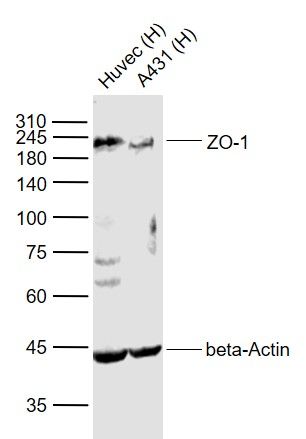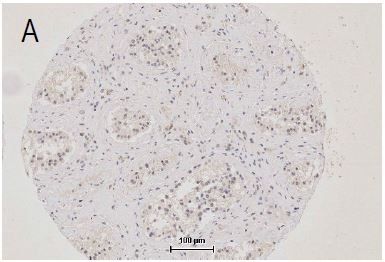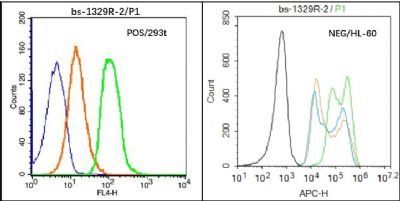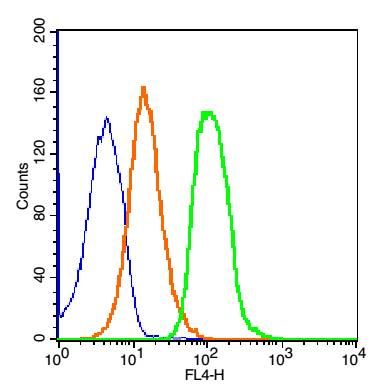[IF=2.118] Li X et al. Overexpression of lncRNA H19 changes basic characteristics and affects immune response of bovine mammary epithelial cells. PeerJ. 2019 Apr 5;7:e6715. WB ; Bovine.
[IF=4.034] Fuqing Huang. et al. Nisin Z attenuates lipopolysaccharide-induced mastitis by inhibiting the ERK1/2 and p38 mitogen-activated protein kinase signaling pathways. J Dairy Sci. 2022 Feb;: WB ; Mouse.
[IF=6.543] Deng Liangjun. et al. The Attenuation of Chronic Ulcerative Colitis by (R)-salbutamol in Repeated DSS-Induced Mice. Oxid Med Cell Longev. 2022;2022:9318721 WB,IF ; Mouse.
[IF=6.291] Shaofeng Wu. et al. The neuroprotective effect of curcumin against ATO triggered neurotoxicity through Nrf2 and NF-κB signaling pathway in the brain of ducks. Ecotox Environ Safe. 2021 Dec;228:112965 WB ; Duck.
[IF=20.722] Yuting Qin. et al. Colonic mucus-accumulating tungsten oxide nanoparticles improve the colitis therapy by targeting Enterobacteriaceae. Nano Today. 2021 Aug;39:101234 IF ; Mouse.
[IF=3.683] Jin Zhao. et al. Damage to intestinal barrier integrity in piglets caused by porcine reproductive and respiratory syndrome virus infection. Vet Res. 2021 Dec;52(1):1-14 IHC ; Pig.
[IF=3.531] Yanan Gao. et al. Aflatoxin B1 and Aflatoxin M1 Induce Compromised Intestinal Integrity through Clathrin-Mediated Endocytosis. Toxins. 2021 Mar;13(3):184 WB,IF ; Mouse, Human.
[IF=2.914] Xiaoli Gao. et al. Effects of Clostridium perfringens beta2 toxin on apoptosis, inflammation, and barrier function of intestinal porcine epithelial cells. Microb Pathogenesis. 2020 Oct;147:104379 WB ; Pig.
[IF=7.546] Jiali Yuan. et al. Effects of metal nanoparticles on tight junction-associated proteins via HIF-1α/miR-29b/MMPs pathway in human epidermal keratinocytes. Part Fibre Toxicol. 2021 Dec;18(1):1-22 IF ; Human.
[IF=4.872] Wanfa Dong. et al. Oral delivery of staphylococcal nuclease ameliorates DSS induced ulcerative colitis in mice via degrading intestinal neutrophil extracellular traps. Ecotox Environ Safe. 2021 Jun;215:112161 IHC ; Mouse.
[IF=4.651] Masayoshi Ko. et al. Modulation of serotonin in the gut-liver neural axis ameliorates the fatty and fibrotic changes in non-alcoholic fatty liver. Dis Model Mech. 2021 Mar;14(3) IHC ; Mouse.
[IF=5.546] Yaqi Chang. et al. Glucagon‐like peptide 2 attenuates intestinal mucosal barrier injury through the MLCK/pMLC signaling pathway in a piglet model. J Cell Physiol. 2021 Apr;236(4):3015-3032 IHC ; Pig.
[IF=1.785] Yan Luo. et al. Effects of norepinephrine on colonic tight junction protein expression during heat stress. Exp Ther Med. 2021 May;21(5):1-9 WB,IF,IHC ; Rat, Human.
[IF=3.779] Sebastian G et al. Lythrum salicaria Ellagitannins Stimulate IPESLCJ2 Cells Monolayer Formation and Inhibit Enteropathogenic Escherichia coli Growth and AdhesionJ Nat Prod.2020 Dec 24;83(12):3614-3622. WB ; Pig.
[IF=2.276] Y D et al. ROS Plays a Role in the Neonatal Rat Intestinal Barrier Damages Induced by HyperoxiaBiomed Res Int.2020 Dec 26;2020:8819195. WB ; Rat、Human.
[IF=2.984] Ruirui Luoet al. Clostridium perfringens beta2 toxin induced in vitro oxidative damage and its toxic assessment in porcine small intestinal epithelial cell lines. Gene
. 2020 Oct 30;759:144999. IF ; pig.
[IF=1.813] Wang Y et al. Ma Xing Shi Gan Decoction Protects against PM2.5-Induced Lung Injury through Suppression of Epithelial-to-Mesenchymal Transition (EMT) and Epithelial Barrier Disruption. Evid Based Complement Alternat Med. 2020 Jun 17;2020:7176589. WB ; Rat.
[IF=4.067] Wang X et al. LRRC75A antisense lncRNA1 knockout attenuates inflammatory responses of bovine mammary epithelial cells. International Journal of Biological Sciences. 2020; 16(2): 251-263. WB&ICF ; Bovine.
[IF=-] Bhushan A et al. MICROFLUIDIC DEVICE WITH EXTRACELLULAR MATRIX SUPPORT MEMBRANE. US Patent App. 16/270,376, 2019 ICF ; Human.
[IF=3.571] Song M et al. Chenodeoxycholic acid (CDCA) protects against the LPS-induced impairment of intestinal epithelial barrier function via FXR-MLCK pathway. J Agric Food Chem. 2019 Aug 5. WB ; Pig.
[IF=3.289] Chen M et al. Dietary L-Tryptophan alleviated LPS-induced intestinal barrier injury by regulating tight junctions in Caco-2 cell monolayer model.Food Funct. 2019 May 22;10(5):2390-2398. WB ; Human.
[IF=3.454] Li T et al. Bovine α-lactalbumin hydrolysates ameliorate obesity-associated endotoxemia and inflammation in high-fat diet-fed mice through modulation of gut microbiota. Food Funct. 2019 May 17. WB ; Mouse.
[IF=3.47] Li T et al. Milk fat globule membrane supplementation modulates the gut microbiota and attenuates metabolic endotoxemia in high-fat diet-fed mice. Journal of Functional Foods,2018 47, 56–65. WB ; Mouse.
[IF=4.12] Zou et al. Huangqin-tang ameliorates dextran sodium sulphate-induced colitis by regulating intestinal epithelial cell homeostasis, inflammation and immune response. (2016) Sci.Rep. 6:39299 IHC ; Mouse.
[IF=3.94] Kulhankova, Katarina, et al. "The Superantigen Toxic Shock Syndrome Toxin-1 Alters Human Aortic Endothelial Cell Function." Infection and immunity (2017): IAI-00848. FCM ; Human.
[IF=2.86] Zhao, Yuan, et al. "Effects of soybean agglutinin on intestinal barrier permeability and tight junction protein expression in weaned piglets."International journal of molecular sciences 12.12 (2011): 8502-8512. WB, IHSLCP ; Pig.
[IF=2.03] Gu, Yan-ting, et al. "Calcium-activated potassium channel activator down-regulated the expression of tight junction protein in brain tumor model in rats." Neuroscience letters 493.3 (2011): 140-144. WB ; Rat.
[IF=3.51] Zhang W et al. Role of EGFR/ErbB2 and PI3K/AKT/e-NOS in Lycium barbarum polysaccharides Ameliorating Endothelial Dysfunction Induced by Oxidative Stress. Am J Chin Med. 2019 Oct 23:1-17. WB ; Rat.
[IF=3.545] Lackner I et al. Toll-Like Receptor-Mediated Cardiac Injury during Experimental Sepsis. Mediators of Inflammation, 2020, 1–12. ICF ; Mouse.
[IF=3.241] Su H et al. cis 9, trans 11, but not trans 10, cis 12 CLA isomer, impairs intestinal epithelial barrier function in IPESLCJ2 cells and mice through activation of GPR120-[Ca2+]i and the MLCK signaling pathway. Food Funct. 2020 Apr 30;11(4):3657-3667. WB ; pig.
[IF=4.546] Xin-Ran Liu. et al. Radioprotective Effect of Whey Hydrolysate Peptides against γ-Radiation-Induced Oxidative Stress in BALB/c Mice. Nutrients. 2021 Mar;13(3):816 IHC ; Mouse.
[IF=5.878] Chiara Corpetti. et al. Cannabidiol inhibits SARS-Cov-2 spike (S) protein-induced cytotoxicity and inflammation through a PPARγ-dependent TLR4/NLRP3/Caspase-1 signaling suppression in Caco-2 cell line. 2021 Oct 12 WB ; Human.
[IF=7.963] Jianzhao Liao. et al. Gut microbiota disturbance exaggerates battery wastewater-induced hepatotoxicity through a gut-liver axis. Sci Total Environ. 2022 Feb;809:152188 WB ; Mouse.
[IF=3.352] Chen Zhong. et al. DL-methionine and DL-methionyl-DL-methionine Increase Intestinal Development and Activate Wnt/β-catenin Signaling Activity in Domestic Pigeons (Columba livia). Poultry Sci. 2021 Dec;:101644 IF ; White king pigeons.
[IF=2.629] Rui Xuelin. et al. Painong San, a Traditional Chinese Compound Herbal Medicine, Restores Colon Barrier Function on DSS-Induced Colitis in Mice. Evid-Based Compl Alt. 2021;2021:2810915 IF ; Mouse.
[IF=4.546] Qing Li. et al. Fumonisin B1 Inhibits Cell Proliferation and Decreases Barrier Function of Swine Umbilical Vein Endothelial Cells. Toxins. 2021 Dec;13(12):863 WB ; Pig.
[IF=9.933] Hohyeon Han. et al. A Bioprinted Tubular Intestine Model Using a Colon-Specific Extracellular Matrix Bioink. 2021 Nov 16 IF ; Pig.
[IF=9.229] Xiao Wang. et al. Oral Core–Shell Nanoparticles Embedded in Hydrogel Microspheres for the Efficient Site-Specific Delivery of Magnolol and Enhanced Antiulcerative Colitis Therapy. Acs Appl Mater Inter. 2021;XXXX(XXX):XXX-XXX IHC ; Mouse.
[IF=4.013] Xia Liu. et al. Luteolin alleviates non-alcoholic fatty liver disease in rats via restoration of intestinal mucosal barrier damage and microbiota imbalance involving in gut-liver axis. Arch Biochem Biophys. 2021 Oct;711:109019 WB,IHC ; Rat.
[IF=3.616] Yanting Hou. et al. Solid-in-oil nanodispersions as a novel delivery system to improve the oral bioavailability of bisphosphate, risedronate sodium. Eur J Pharm Sci. 2020 Dec;155:105521 IF ; Mouse.
[IF=4.087] Paola Pietrangeli. et al. Lathyrus sativus diamine oxidase reduces Clostridium difficile toxin A‐induced toxicity in Caco‐2 cells by rescuing RhoA‐GTPase and inhibiting pp38‐MAPK/NF‐κB/HIF‐1α activation. Phytother Res. 2021 Jan;35(1):415-423 IF ; Human.
[IF=3.943] Ning Xu. et al. Protective effect and mechanism of rebamipide on NSAIDs associated small bowel injury. Int Immunopharmacol. 2021 Jan;90:107136 WB,IHC ; Rat.
[IF=1.813] Zhang Boxun. et al. The Herbal Medicine Scutellaria-Coptis Alleviates Intestinal Mucosal Barrier Damage in Diabetic Rats by Inhibiting Inflammation and Modulating the Gut Microbiota. Evid-Based Compl Alt. 2020;2020:4568629 IHC ; Rat.
[IF=13.903] Tang Y et al. Overcoming the Reticuloendothelial System Barrier to Drug Delivery with a "Don't-Eat-Us" Strategy. ACS Nano. 2019 Nov 5. ICF ; Mouse.
[IF=3.197] Ho SW et al. Effects of supplementation of citrulline and Lactobacillus helveticus ASCC 511 on intestinal epithelial cell integrity. Journal of Functional Foods,2019 103571. WB ; Pig.
[IF=3.775] Xue Y et al. Chlorogenic acid attenuates cadmium-induced intestinal injury in Sprague–Dawley rats. Food Chem Toxicol. 2019 Aug 4;133:110751. WB ; Rat.
[IF=1.851] Guo Y et al. Impaired intestinal barrier function in a mouse model of hyperuricemia. Mol Med Rep. 2019 Aug 12. IHSLCP ; Mouse.
[IF=0] Yılmaz Ö et al. May zonula occludens proteins regulate the pathogenesis of allergic rhinitis? Tr-ENT 2019;29(2):100-106. IHSLCP ; Human.
[IF=3.743] Li N et al. Modification effects of SanWei GanJiang Powder on liver and intestinal damage through reversing bile acid homeostasis. Biomed Pharmacother. 2019 Aug;116:109044. IHSLCP ; Mouse.
[IF=3.118] Xia W et al. Inhibition of MRP4 alleviates sepsis-induced acute lung injury in rats. Int Immunopharmacol. 2019 Apr 14;72:211-217. WB ; Rat.
[IF=3.392] Han L et al. Beneficial Effects of Potentilla discolor Bunge Water Extract on Inflammatory Cytokines Release and Gut Microbiota in High-Fat Diet and Streptozotocin-Induced Type 2 Diabetic Mice.Nutrients. 2019 Mar 20;11(3). WB ; Mouse.
[IF=0] Chen MT et al. SIRT3 Deficiency Promotes High-Fat Diet-Induced Non-Alcoholic Fatty Liver Disease In Correlation With Impaired Intestinal Permeability Through Gut Microbial Dysbiosis. Mol. Nutr. Food Res. 2018, 360612. WB ; Mouse.
[IF=3.234] Zhuang S et al. Rhein ameliorates lipopolysaccharide-induced intestinal barrier injury via modulation of Nrf2 and MAPKs.(2019)Life Sci. Life Sci. Jan 1;216:168-175. WB ; Rat.
[IF=3.166] Chang L et al. Melamine causes testicular toxicity by destroying blood-testis barrier in piglets.Toxicol Lett. 2018 Oct 15;296:114-124. WB ; Piglet.
Copyright © 2007-2018
Sunlong Medical All Rights Reserved.



